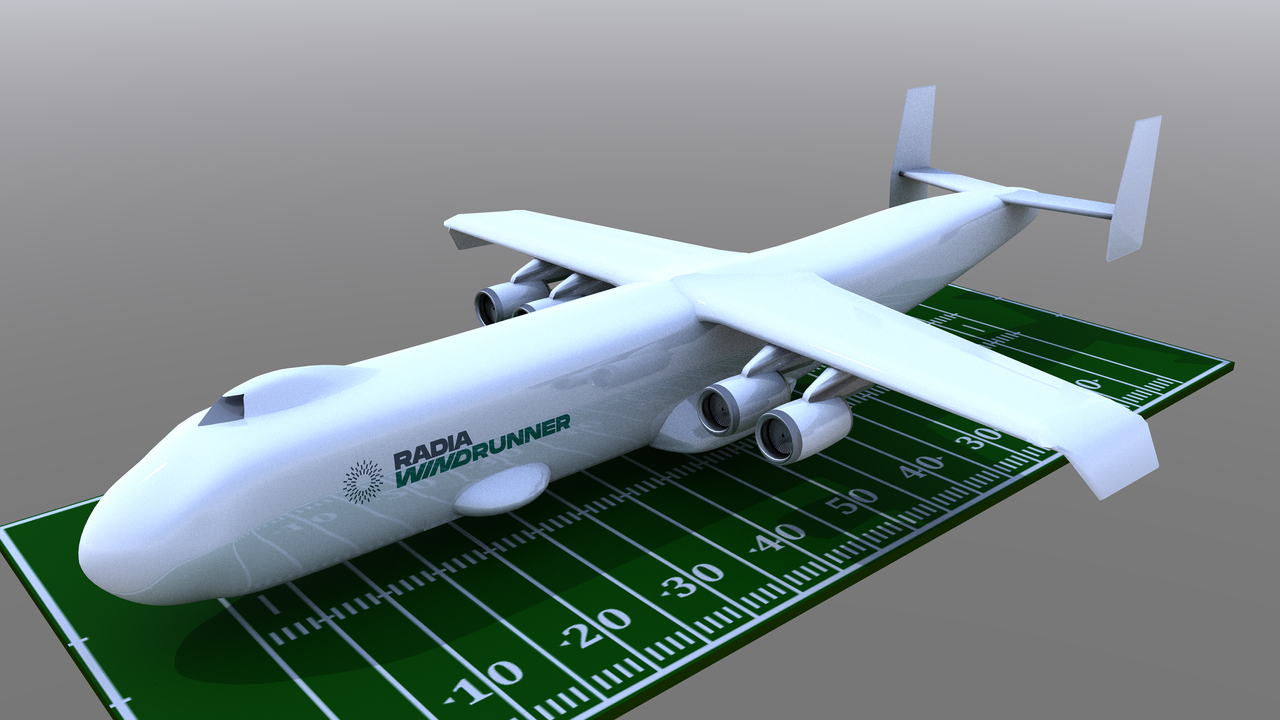In an era where the boundaries of technology and ambition continuously blur, the Radia WindRunner emerges as a testament to human ingenuity and the relentless pursuit of innovation in aviation. This concept, which could become the largest aircraft to ever grace the skies, is not just about size; it's about reimagining the future of air transport. Here are five critical aspects of the WindRunner that set it apart as a pioneering giant in the aviation industry.
1. Monumental Dimensions
The Radia WindRunner is not just an aircraft; it's a leviathan of the skies. With a staggering length of 356 feet (108 meters), it surpasses the dimensions of the world's most iconic structures and aircraft. Its height stands at an impressive 79 feet (24 meters), coupled with a wingspan of 261 feet (80 meters). Designed to transport the next generation of wind turbine blades, which can extend up to 344 feet (105 meters), the WindRunner's sheer size is a marvel in itself, dwarfing existing giants in the field of aviation.
2. Unprecedented Cargo Bay Volume.
The WindRunner's cargo bay is a testament to Radia's vision of revolutionizing large-scale transport. Boasting a volume of 272,000 cubic feet (8,200 cubic meters), it offers nearly seven times the capacity of the Antonov An-124, one of the largest freighter aircraft before the WindRunner. This vast space is crucial for transporting the mammoth components of modern and future wind turbines, promising safer, more efficient logistical solutions.

3. Tried and Tested Technology
Despite its groundbreaking scale, the WindRunner's design relies on proven aviation technologies. Radia has embraced existing, efficient aerospace-grade materials and fabrication processes approved by the Federal Aviation Administration (FAA). This strategic decision underscores Radia's commitment to safety, reliability, and the pragmatic realization of the WindRunner concept, ensuring its compatibility with current aviation infrastructure and standards.
4. Meeting the Future Demand
Radia's vision extends far beyond the present, aiming to accommodate the escalating size and power of wind turbines. With Bloomberg NEF projecting a $10 trillion investment in onshore wind technology by 2050, the WindRunner is poised to play a crucial role in this green revolution. Its ability to transport turbine blades up to 344 feet (105 m) positions Radia at the forefront of solving logistical challenges posed by the next wave of renewable energy infrastructure.
5. Versatility in Operation
One of the WindRunner's most remarkable features is its operational flexibility. Capable of landing on airstrips as short as 6,000 feet (1,800 meters), the WindRunner is designed for accessibility. This capability is pivotal, especially when considering the remote locations of many wind farm sites. The aircraft's design allows it to operate in semi-prepared airstrips, ensuring that even the most challenging terrains are within reach, thus redefining the logistics of transporting large-scale cargoes.
If you need a professional flight time calculator for business aviation operators and brokers, look no further than Aviapages. This tool delivers precise flight time, distance, and fuel consumption estimates, streamlining your route planning with options for alternate airports and fuel stops. Nowadays, there is a necessity to avoid some countries' airspace due to numerous reasons. Aviapages provides opportunity to build routes taking into account this additional parameter.
The Radia WindRunner stands as a symbol of what's possible when innovation meets ambition. As we stand on the cusp of a new era in aviation, the WindRunner promises to redefine the skies, not just as the largest aircraft ever conceived but as a beacon of future transportation solutions.



